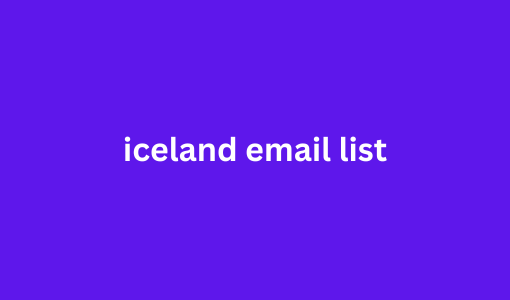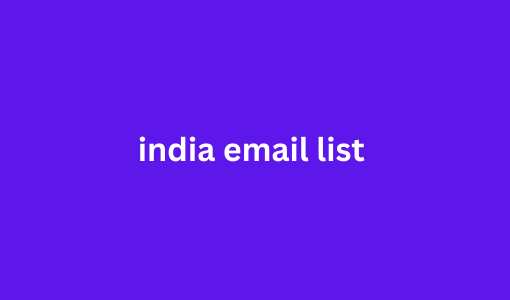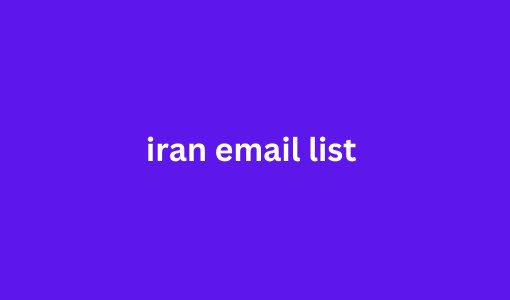Email marketing is a golden tool in digital marketing. With its direct communication, high ROI and personalization advantages, it has become an important channel for companies to build brand loyalty and promote product sales. Email marketing is one of the channels with the highest ROI in digital marketing, and allows you to control your customer list and avoid relying on social media algorithms. This article will explore in depth how to optimize email marketing strategies and increase engagement, covering all aspects of campaign types, personalization, list building, performance measurement and advanced techniques.
Key Takeaways
Email marketing offers unmatched ROI and personalization, providing a direct communication channel with your customers.
Leverage a variety of email campaign types—promotional, informational, and transactional—to effectively reach your audience at different stages of the buyer’s journey.
Continuously analyze and optimize your email performance metrics to refine your strategy and increase engagement.
Learn about email marketing
Email marketing is a powerful marketing channel and form of direct marketing that uses email to promote products and foster brand loyalty. It stands out in the digital marketing world because of its unique ability to create one-to-one communications, ensuring a more personal connection with each recipient. Unlike social media platforms, where businesses are subject to algorithmic changes, email marketing allows businesses to own their contact lists, ensuring direct access to customers. This control over the communication channel makes email marketing an indispensable email marketing tool in any comprehensive digital marketing strategy.
The benefits of email marketing ireland email list are many. Not only does it drive conversions and build brand loyalty, but it also has one of the highest return on investment (ROI) among digital marketing channels. This high ROI is due in part to the scalability of email marketing, which allows campaigns to easily scale from a small number of customers to a large audience. Additionally, email marketing increases brand awareness by maintaining constant communication with your customers, keeping your brand top of mind. Not surprisingly, more than 70% of consumers prefer to communicate with businesses via email.
Aligning your email marketing campaigns with your overall brand can increase their effectiveness. Customizing outreach based on customer preferences not only increases engagement, but also fosters loyalty and trust among subscribers. With email marketing’s expected revenue expected to reach $13 billion by 2025, now is the perfect time to perfect your email marketing strategy and take advantage of this powerful marketing channel.
Types of Email Campaigns
Email marketing can be used for various types of campaigns, each with a different purpose and catering to different stages of the buyer’s journey. The main types of email campaigns are promotional, informational, and transactional. Utilizing a variety of email campaign types allows businesses to effectively reach their audience and cater to their specific needs.
#1 Promotional Emails
Promotional emails are the cornerstone of many email marketing strategies, with the primary purpose of driving direct responses and boosting sales. These emails often include incentives such as discounts, limited-time offers, and clear calls to action to encourage purchases. The frequency of promotional emails can vary, often increasing during key periods such as major holidays, and sending fewer emails during slower times such as after the holidays. A well-crafted promotional email campaign can create anticipation among customers, which can increase sales.
For example, offering a 10% discount on the first order is a common promotional strategy to encourage email subscriptions. Strategically planned campaigns that align with marketing goals can drive significant growth in revenue.
#2 Informational Email
Informative emails, such as newsletters, play a vital role in maintaining ongoing communication with your subscribers. These emails are usually sent on a regular basis – weekly, bi-weekly or monthly – helping to keep your business and products top of mind for your audience. The main purpose of a newsletter is to share valuable content, including tips, articles, updates and customer reviews, to keep subscribers engaged and informed.
Regular newsletters build brand loyalty by consistently providing value to subscribers. Including a mix of useful content, such as blog posts and insights, ensures that newsletters remain informative and engaging. This constant communication helps build stronger relationships with your audience and can increase engagement and customer loyalty.
#3 Transactional Emails
Transactional emails are automated messages triggered by specific customer actions, such as a sign-up or a purchase. These emails play a vital role in confirming the action and providing additional information to guide the customer in taking the next step.
For example, confirmation emails not only assure users that their message has been received, but they also provide further instructions or suggestions, thereby enhancing the overall customer experience.
Develop an effective email marketing strategy
Developing an effective email email data marketing strategy is the roadmap that guides your campaign and ensures its success. This involves several key steps, including defining your goals, segmenting your audience, and crafting compelling content. Clear goals aligned with your campaign allow you to measure success and make necessary performance adjustments.
#1 Define your goals
Setting clear goals is the first step to any successful email marketing campaign. These goals should align with your overall business goals and provide direction for your campaign. Using the SMART framework — specific, measurable, achievable, realistic, and timely — can help create effective goals. For example, your goals might include increasing brand awareness, driving sales, or improving customer retention.
Once you’ve set your goals, creating an action plan is essential to outlining the steps needed to achieve them. This includes determining the type of email campaign you’ll use, identifying your target audience, and setting benchmarks for measuring success.
Gathering background information before setting goals will allow you to understand the average email statistics for your industry and use them as a benchmark.
#2 Segment your audience
Audience segmentation is essential to increasing response rates and generating more revenue. This process involves dividing your email list into smaller sublists with common characteristics, such as demographics, purchase history, or engagement levels. Understanding your audience allows you to create professional campaigns that resonate, thereby increasing engagement and conversions.
An effective way to segment your adb directory email list is to create separate lead magnets and opt-in forms tailored for each part of the buyer’s journey. Advanced segmentation techniques allow marketers to tailor emails to specific audience personas, enhancing relevance and effectiveness.
Implementing a sunset strategy by removing inactive subscribers can also improve overall list quality and engagement.
#3 Create engaging content
Engaging content is the cornerstone of any successful email marketing campaign. Email subject lines are especially important because they determine whether or not your email is opened. Subject lines should spark interest or a desire to open to ensure higher open rates. Effective use of preview text can add context and increase open rates.
The recommended content mix for email campaigns is 80% valuable information and 20% promotion. Email content should be consistent with your brand tone and focus on one theme. Incorporating visuals can significantly increase engagement and memorability. An effective call to action button must stand out.
Optimizing email campaigns for mobile devices is essential to increasing user conversion rates. Using storytelling techniques in your email content can significantly increase engagement rates. Subscribers should look forward to opening your emails because they know they will receive valuable and engaging content.
Grow your email list
A strong subscriber list is the foundation of any successful email marketing campaign. The first step in building an email marketing list is to establish clear goals. Based on these goals, you can adopt various methods to grow your email list, such as using opt-in forms and lead magnets.
Engaging content that’s interesting and valuable encourages subscribers to share the email with their social networks, helping to grow your list.
#1 Opt-in Form
Opt-in forms are the bridge to getting leads. Individuals must give explicit permission by opting in to your email list. Creating visible and simple subscription forms can lead to an increase in signups, so opt-in forms should be placed in high-traffic areas of your website.
An effective opt-in form should include an attractive design, a compelling headline, and an enticing offer that encourages sign-up. Slide-in and lightbox opt-ins offer a non-intrusive method of subscribing without interrupting the user experience. It is critical that the opt-in form reflects a truthful statement that builds trust with subscribers.
#2 Magnet
A lead magnet is an essential tool in email marketing that provides value to attract visitors to join your email list. It should provide significant value and relevance to your target audience to effectively attract them to your email list.
Offering free resources, such as a downloadable tool or guide, in exchange for an email address is a proven method for growing your email list. Utilizing effective lead magnets can significantly increase your ability to grow and maintain a strong email subscription list.
Personalization and automation
Personalization and automation are key elements in creating successful email marketing campaigns.
Automation, on the other hand, enables complex communication flows across multiple channels, strengthening user relationships and improving targeting and engagement.
#1 Personalized Content
Personalized emails play a vital role in fostering strong customer relationships. This is essential for effective communication and engagement. When emails are personalized, they make customers feel valued and understood, which can significantly increase engagement rates. Personalization increases open rates, click-through rates, and conversion rates, making it a powerful tool for email marketers. For example, Netflix effectively personalizes their emails using customized content based on user engagement.
Marketers can make email personalization easier through automation, list segmentation, and third-party integrations. Considering factors such as location, industry, and engagement level can help personalize emails effectively. Segmenting email lists allows businesses to deliver more relevant and engaging content, which in turn fosters greater customer loyalty and revenue.
#2 Email Automation
Email automation is a game changer in the world of digital marketing. The simplest form of email automation is an autoresponder, which can handle basic tasks like sending a welcome email or a follow-up. In the coming year, nearly half of companies will focus on developing a marketing automation strategy, recognizing its importance in driving engagement and conversions.
Automation can include features like cart abandonment reminders to recover potential lost sales. Optimizing email campaigns across all devices is essential for high conversion rates.
By leveraging automation, marketers can create sophisticated communication flows, enhance customer relationships, and improve overall email marketing performance.
Measuring Email Marketing Performance
Measuring the performance of your email marketing campaigns is essential to understanding their effectiveness and making necessary adjustments. Key metrics to evaluate include open rates, click-through rates, conversion rates, bounce rates, list growth rates, email share rates, overall ROI, and unsubscribe rates.
Tracking these metrics can help you maintain a healthy email list and increase engagement.
#1 Important Metrics
Key metrics for evaluating email marketing effectiveness include:
– Open rate
– Click rate
– Conversion rate
– Unsubscribe rate
Click-through rate (CTR) is a key metric that represents the percentage of email recipients who click on the links in the email.
Conversion rate measures the percentage of email recipients who perform a desired action after clicking a link in the email.
Your unsubscribe rate reflects the percentage of recipients who opt out after receiving your email, which can help measure the overall health of your email list.
Regularly monitoring key metrics can reveal how your email marketing campaigns are performing and highlight areas for improvement. This data-driven approach ensures that your email marketing efforts are continually optimized for better results.
#2 Analysis Results
Analyzing key email marketing metrics can inform future campaign improvements and help refine email marketing strategies. Monitoring campaign metrics enables marketers to adjust email content and strategies to increase click-through rates. After launching an initial email marketing campaign, it is important to analyze email marketing performance to optimize future efforts.
Improving email marketing results requires a commitment to analyzing performance data and adjusting your strategy accordingly. Understanding what’s working and what’s not working allows you to make data-driven decisions that lead to more effective and engaging email campaigns.
#1 Avoid spam filters
Avoiding spam folders is essential to ensure your emails reach your subscribers and don’t go unnoticed. Launching an email campaign carelessly could result in your emails being marked as spam or even blocked. Before launching an email marketing campaign, make sure your forms are valid, your thank you page is live, and the offer is delivered as promised. Writing compelling subject lines without using spammy phrases is essential to encouraging email opens.
Consistency in your email marketing program builds trust and keeps you top of mind in your audience. Informing your audience of your contact schedule sets expectations and can reduce unsubscribes. Make it easy to unsubscribe by providing a visible button to help prevent your emails from being marked as spam.
#2 Maintain a Clean Email List
Regular list cleaning helps maintain a good sender reputation and improves email deliverability. Regularly cleaning your email list can optimize deliverability and keep engagement rates higher. This involves reviewing subscriber data to ensure list health and removing inactive subscribers.
If a subscriber hasn’t engaged in 6 months, consider sending a reactivation campaign or asking for a second opt-in. For subscribers with low engagement scores, it’s necessary to clean up your list to maintain its quality. Remove subscribers who haven’t been contacted to keep your email list healthy.
Advanced Email Marketing Tips
In order to stay ahead in the competitive digital marketing landscape, it’s essential to integrate advanced email marketing techniques. Techniques such as A/B testing and dynamic content can significantly improve the effectiveness of email campaigns, leading to higher engagement and results.
#1 A/B Testing
A/B testing in email marketing is a method of comparing two versions of an email to determine which performs better. Elements that can be A/B tested include email subject lines, content formats, and CTAs. To conduct A/B testing effectively, avoid informal, unscientific methods and identify variables to control while effectively comparing results. The purpose of A/B testing is to optimize the open rate and click-through rate of a campaign to systematically improve performance.
When conducting A/B testing, it is recommended to test one element at a time to determine the effect. Systematic A/B testing improves email open rates by testing subject lines.






